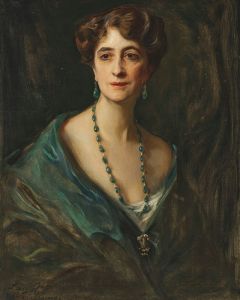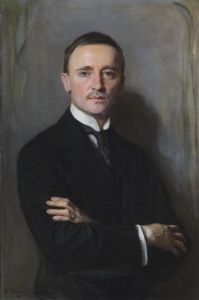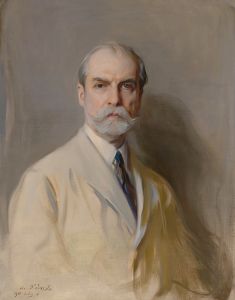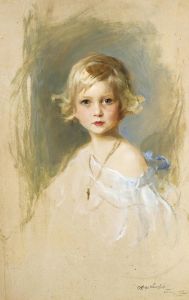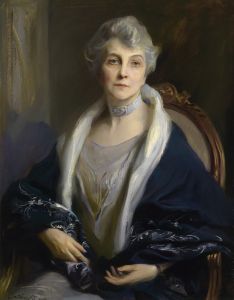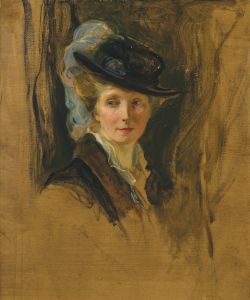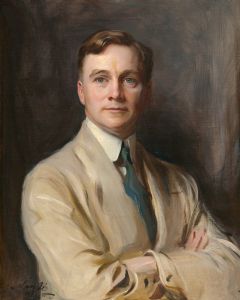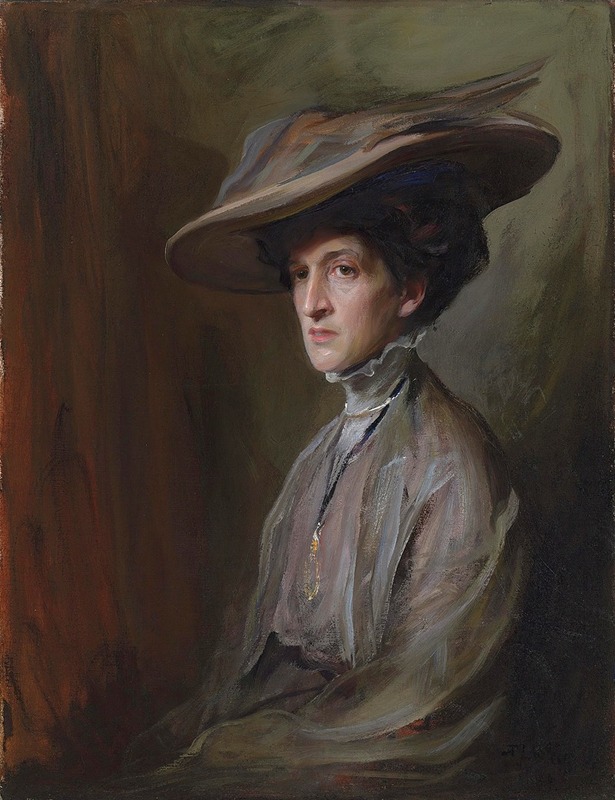
Mrs Herbert Asquith, later Countess of Oxford and Asquith
A hand-painted replica of Philip Alexius de László’s masterpiece Mrs Herbert Asquith, later Countess of Oxford and Asquith, meticulously crafted by professional artists to capture the true essence of the original. Each piece is created with museum-quality canvas and rare mineral pigments, carefully painted by experienced artists with delicate brushstrokes and rich, layered colors to perfectly recreate the texture of the original artwork. Unlike machine-printed reproductions, this hand-painted version brings the painting to life, infused with the artist’s emotions and skill in every stroke. Whether for personal collection or home decoration, it instantly elevates the artistic atmosphere of any space.
Philip Alexius de László's portrait of Mrs. Herbert Asquith, later known as the Countess of Oxford and Asquith, is a significant work by the renowned Anglo-Hungarian painter. De László, celebrated for his portraits of royalty and prominent figures of the early 20th century, captured the likeness of many influential individuals, and this painting is no exception.
Mrs. Herbert Asquith, born Emma Alice Margaret Tennant in 1864, was a distinguished figure in British society. She married Herbert Henry Asquith, who served as the Prime Minister of the United Kingdom from 1908 to 1916. As the wife of a prime minister, she played an essential role in the social and political circles of her time. Her marriage to Asquith brought her into contact with many of the leading figures of the day, and she was known for her charm and intelligence.
The portrait by de László is believed to have been painted around the time when her husband was in office, capturing her in the prime of her social influence. De László's style is characterized by its elegance and attention to detail, and this painting is no exception. The artist was known for his ability to convey the personality and status of his subjects through his use of color, composition, and brushwork.
In the portrait, Mrs. Asquith is depicted with a serene and composed expression, reflecting her status and poise. The background and her attire are rendered with de László's typical finesse, highlighting his skill in portraying the textures and subtleties of fabric and skin. The painting not only serves as a representation of Mrs. Asquith herself but also as a reflection of the era's social and cultural milieu.
De László's work is often compared to that of John Singer Sargent, another prominent portrait artist of the time. Both artists shared a similar approach to capturing the essence of their subjects, though de László's work is noted for its softer palette and more intimate portrayal. His portraits are celebrated for their ability to convey the dignity and grace of the individuals he painted, and the portrait of Mrs. Asquith is a testament to this talent.
The painting is part of a larger body of work by de László that includes portraits of many other notable figures, including members of the British royal family and European aristocracy. His ability to capture the likeness and character of his subjects made him one of the most sought-after portraitists of his time.
Today, the portrait of Mrs. Herbert Asquith remains an important piece within the context of early 20th-century portraiture. It not only provides insight into the life and status of its subject but also exemplifies de László's mastery of the portrait genre. The painting continues to be appreciated for its artistic merit and historical significance, offering a glimpse into the world of British high society during a pivotal period in history.








